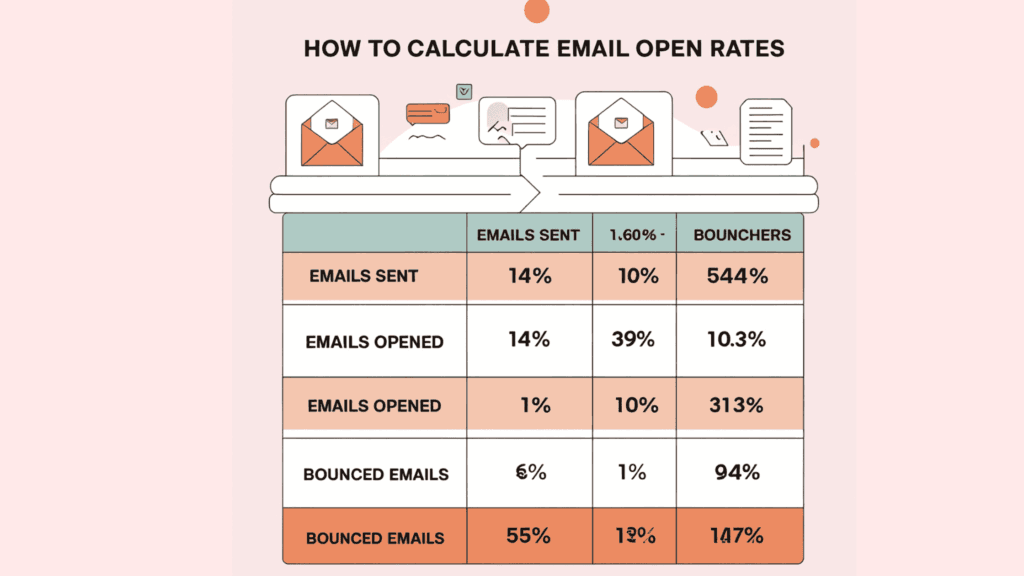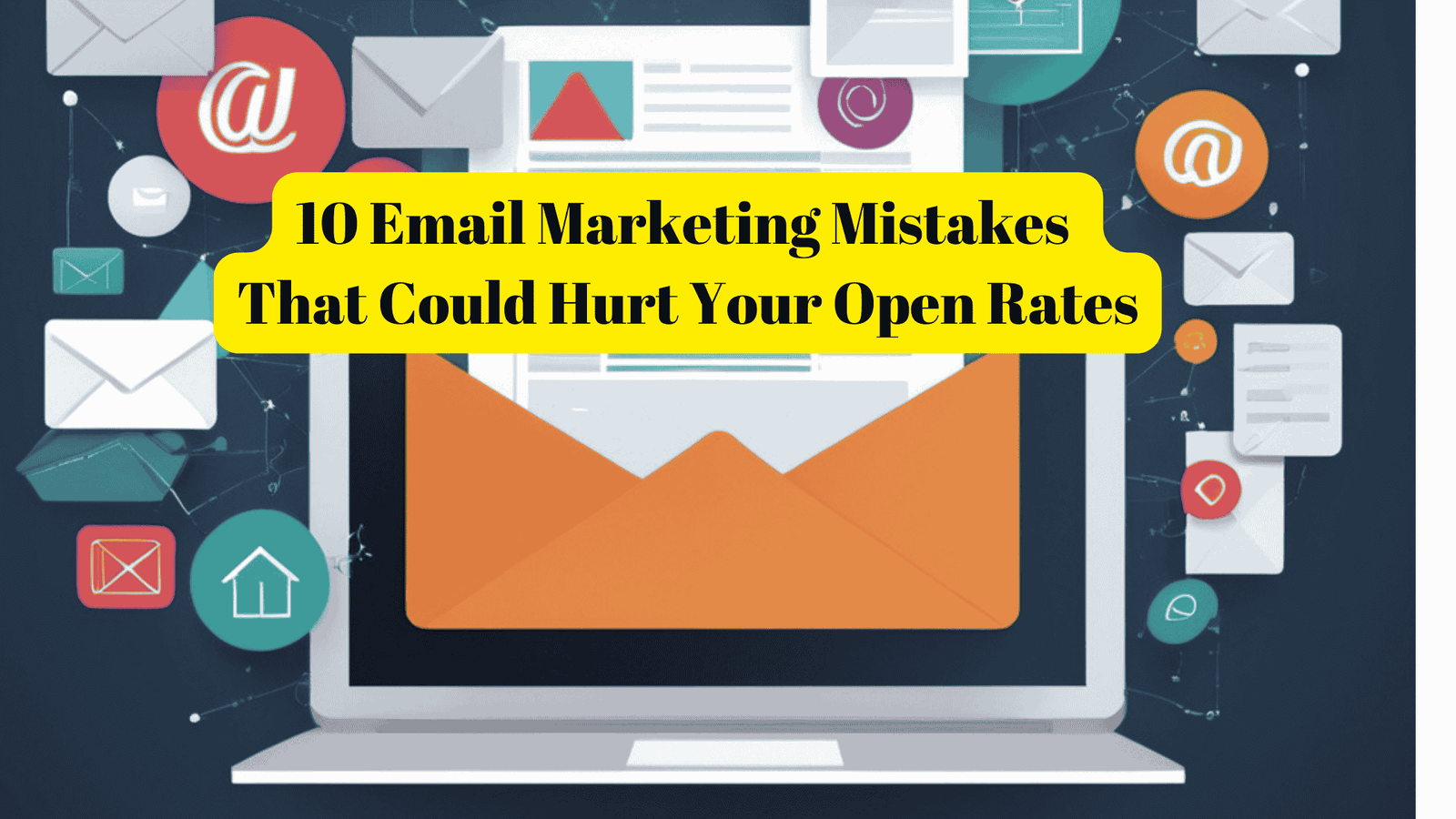Email marketing remains one of the most effective channels for connecting with your audience. However, even small mistakes can significantly hurt your open rates and diminish the impact of your campaigns. In this article, we’ll uncover 10 common email marketing mistakes and provide actionable tips to avoid them, ensuring your emails get opened, read, and acted upon.
What is Email Open Rate and Why Does it Matter?
Email open rate is the percentage of recipients who open your email out of the total number sent. It’s a key metric that reflects how engaging your subject lines are and how much your audience values your content.

Formula to Calculate Open Rate:
[
\text{Open Rate (\%)} = \left(\frac{\text{Emails Opened}}{\text{Emails Sent – Bounced Emails}}\right) \times 100
]
| Metric | Ideal Range |
|---|---|
| Open Rate | 15% – 25% (varies by industry) |
| Click-Through Rate | 2% – 5% |
The Importance of Avoiding Email Marketing Mistakes
Mistakes in your email marketing strategy can lead to:
- Decreased open rates
- Higher unsubscribe rates
- Lower click-through rates
- Poor brand reputation
By understanding and avoiding these mistakes, you can build stronger connections with your audience and achieve better results from your campaigns.
10 Common Email Marketing Mistakes Hurting Your Open Rates
1. Poorly Written Subject Lines
Your subject line is the first thing recipients see, and a weak or generic subject line can cause them to skip or delete your email.
Examples of Mistakes:
- Overusing ALL CAPS or excessive punctuation (e.g., “BUY NOW!!!”)
- Using misleading phrases that feel like clickbait.
Tips to Improve:
- Keep it short and specific (under 50 characters).
- Use personalization (e.g., “John, Here’s Your Exclusive Offer!”).
- Create curiosity (e.g., “Are You Missing Out on These Savings?”).
2. Sending Emails at the Wrong Time
Timing plays a crucial role in open rates. Sending emails at odd hours might result in your email being buried in a crowded inbox.
Best Practices for Timing:
| Audience | Best Times to Send Emails |
|---|---|
| B2B | Weekdays, 10:00 AM – 11:00 AM |
| B2C | Weekends, 9:00 AM or evenings (8:00 PM) |
Use A/B testing to find the optimal time for your audience.
3. Ignoring Email Segmentation
Sending the same email to your entire list can feel impersonal and irrelevant to your subscribers.
Solution:
- Segment your list based on factors such as:
- Purchase history
- Demographics
- Engagement level
- Tailor your message to match each group’s preferences.
4. Overloading Emails with Too Much Content
Overwhelming your audience with lengthy emails or excessive CTAs can cause them to lose interest.
How to Fix It:
- Use a clean, scannable design with bullet points and headers.
- Limit CTAs to one or two per email.
5. Failing to Optimize for Mobile
Over 50% of emails are opened on mobile devices. A non-mobile-friendly email will drive recipients away.
How to Ensure Mobile Optimization:
- Use responsive email templates.
- Keep your subject line under 30 characters for mobile devices.
- Use a single-column layout with large, tappable buttons.
6. Not Testing Emails Before Sending
Failing to test your emails can result in broken links, poor formatting, or typos.
Checklist for Testing Emails:
- Verify all links and CTAs.
- Test how the email looks on various devices and email clients.
- Check for grammar or spelling errors.
7. Sending Too Many Emails
Excessive emailing can lead to audience fatigue, higher unsubscribe rates, and decreased engagement.
Recommended Email Frequency:
| Email Type | Frequency |
|---|---|
| Newsletters | 1-2 per week |
| Promotional Campaigns | 2-4 per month |
| Event Invitations | 1-2 per event |
8. Skipping Personalization
Generic emails can make your audience feel like just another number in your database.
How to Personalize Emails:
- Use recipients’ names in subject lines and greetings.
- Send recommendations based on past purchases or browsing history.
- Segment by location for relevant local offers.
9. Ignoring Spam Triggers
Emails flagged as spam will never make it to your recipient’s inbox.
Avoid These Spam Triggers:
- Overuse of salesy words (e.g., “Free,” “Act Now”).
- Excessive use of exclamation marks or capital letters.
- Missing a physical address or an unsubscribe link.
10. Not Tracking Performance Metrics

Failing to analyze the results of your campaigns leaves you guessing about what works and what doesn’t.
Metrics to Monitor:
| Metric | Why It’s Important |
|---|---|
| Open Rate | Measures the effectiveness of your subject line. |
| Click-Through Rate | Indicates engagement with your content. |
| Bounce Rate | Shows the quality of your email list. |
Use analytics tools to adjust your strategy based on performance data.
How to Improve Your Open Rates
- Craft Better Subject Lines: Test different styles and measure performance.
- Leverage A/B Testing: Experiment with send times, email formats, and CTAs.
- Focus on List Hygiene: Regularly remove inactive subscribers to improve deliverability.
- Optimize Preheader Text: Provide a preview that complements your subject line.
- Use Emojis Sparingly: Emojis can increase open rates but overusing them may seem unprofessional.
FAQs on Email Marketing
Q1: What is a good email open rate?
The ideal open rate varies by industry, but a rate between 15-25% is considered good.
Q2: How often should I send marketing emails?
The frequency depends on your audience. A general rule is 1-2 times per week for newsletters and 2-4 times per month for promotional emails.
Q3: How can I avoid spam filters?
Avoid spam-triggering words, include a clear unsubscribe link, and ensure your sender reputation is strong.
Q4: Should I use images in emails?
Yes, but balance text and images to ensure readability, even if images fail to load.
Q5: How can I measure email marketing success?
Track key metrics like open rates, click-through rates, and conversions to assess performance.
Conclusion
Email marketing is a powerful tool when executed correctly, but common mistakes can undermine your efforts. By avoiding the pitfalls mentioned above and consistently optimizing your campaigns, you can boost your open rates and build lasting relationships with your audience.
What strategies have worked for you in improving open rates? Share your experiences in the comments below!
